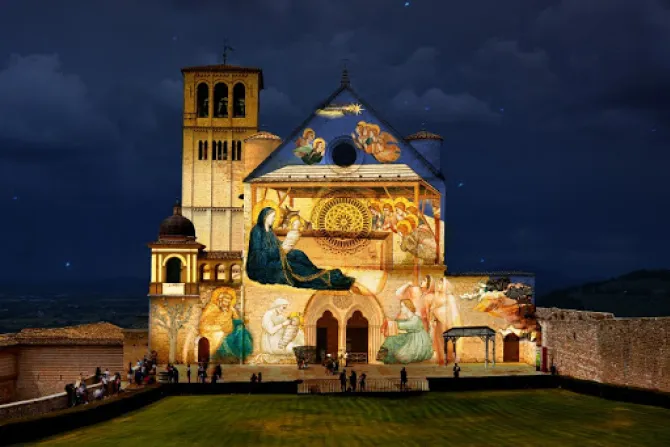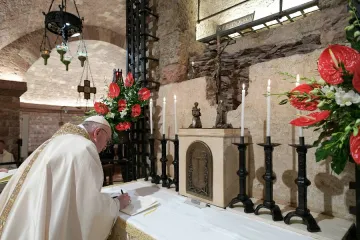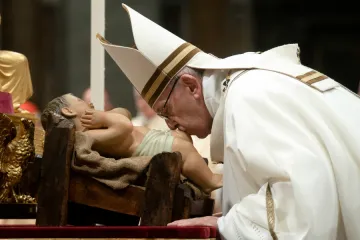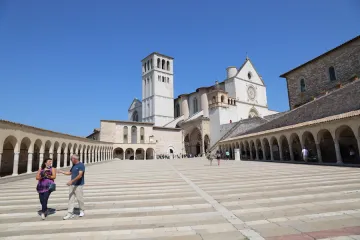Thomas of Celano, the first biographer of St. Francis, wrote that someone present at the Mass had a vision of the baby Jesus himself lying in the manger.
"In a particular way, from the time of its Franciscan origins, the nativity scene has invited us to 'feel' and 'touch' the poverty that God's Son took upon himself in the Incarnation. Implicitly, it summons us to follow him along the path of humility, poverty and self-denial that leads from the manger of Bethlehem to the cross," Pope Francis wrote.

To inaugurate the festivities, Cardinal Mauro Gambetti, who received the red hat last month, offered Mass in the Basilica of St. Francis for the Solemnity of the Immaculate Conception before the blessing of the nativity scene.
A 42-foot Christmas tree from Italy's Trentino province was then lit with 40,000 lights in front of the Basilica of St. Francis, while the Italian singer Gianni Morandi sang "White Christmas."
"The light of Mary's purity has always shone in the Christian people. Since the first centuries of Christianity, the lineage of the Virgin Mother, the simple and the little ones of the Gospel, has venerated the all holy, all beautiful," Gambetti said in his homily Dec. 8.
"Let us draw close to the Virgin Mary … who incessantly repeats with the Spirit: Maranathà, Come Lord Jesus."
Under Italy's coronavirus restrictions, people from outside of the region of Umbria will be unable to visit Assisi during the Christmas season, so the Franciscan Friars of Assisi have created a website allowing visitors view the nativity displays along with videos with spiritual reflections.
Courtney Mares is a Rome Correspondent for Catholic News Agency. A graduate of Harvard University, she has reported from news bureaus on three continents and was awarded the Gardner Fellowship for her work with North Korean refugees.







